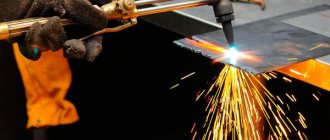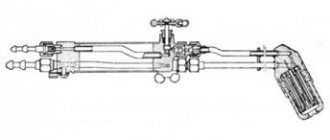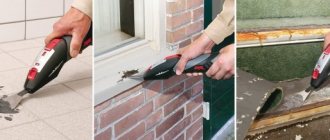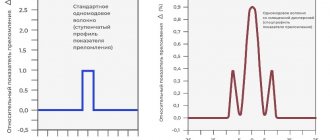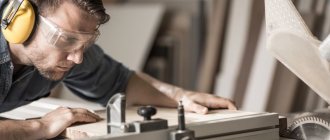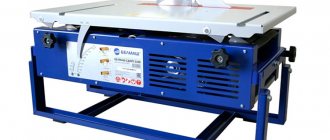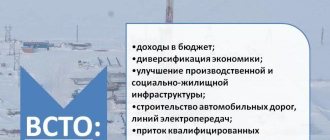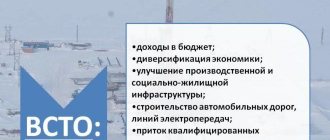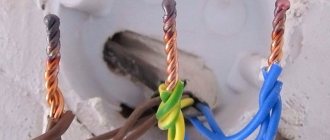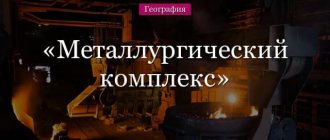What do you think about Gorynych’s apparatus?
A unique miracle of technology that uses distilled water for cutting and a solution of alcohol and water for welding.
- Cuts and processes almost everything, including concrete, basalt, marble, quartz glass and other materials. It also welds everything from carbon steels to alloyed, stainless steels and non-ferrous metals;
- Can solder any metals with low-temperature and hard solders;
- You can use it to smelt a small volume of metal in a crucible and heat treat it;
- Do surface hardening;
- Oxidation of parts;
- Powder coating application;
- Cuts fire-resistant fiberglass;
- Cleans oxidized surfaces;
- Cleans microscopic holes and surfaces of nozzles and dies;
- Melts the surfaces of reinforced concrete in order to reduce its ability to absorb moisture (hygroscopicity);
- Used in the production of jewelry;
- If a fire hazard arises in the workplace, the beginnings of a fire can be eliminated in the extinguished arc mode;
- According to some reports, it can be used to produce small technical diamonds (!).
In total, what happens:
- Point 1. It cuts really well and everything. But how often do you have to cut granite, concrete or glass? It’s cheaper to buy a regular plasma cutter and use it to cut, for example, sheet steel onto a car body.
- Point 2. But it cooks poorly. To achieve good quality seams, you need to have enormous work experience. For each type of metal, you need to select your own proportion of the working fluid (let's call it this way): glycerin + alcohol + distyl. water.
Few people manage to get at least something in terms of welding the first time. Even if a seam begins to form, it later becomes brittle due to hydrogenation. We do not claim that using a multifunctional complex it is impossible to obtain high-quality welding, but this requires skill in controlling the torch and preparing the solution. It is much easier to manage with a conventional inverter for household welding.
- In general, according to points 1-2, the cost of Gorynych is from 29 thousand rubles. For this amount it is quite possible to purchase a normal plasma cutter and an inverter for manual arc welding up to 200A with the functions of easy ignition, anti-sticking of the electrode and arc afterburner.
- According to paragraphs 3-10, for homework, these useful functions are unlikely to be useful to anyone; for industrial use - the “scale” of the equipment is not the same.
- According to point 11, there is evidence that the device copes well with processing jewelry, but this is also from the realm of “rumors”. We have not yet been able to find specific examples of its use by jewelers.
- P.12-13 here without comments, fire extinguisher mode and alchemy for obtaining precious stones.
- Not everyone has the desire to understand all the intricacies of this equipment, which gives rise to a lot of controversy and rumors and turns “Gorynych” almost into a “metaphysical” device.
Burner device
The main element of the burner is a metal body made of stainless steel. Inside the battery housing there is a moisture-absorbing material based on a non-woven fabric made from quartz water-dispersible fibers. The battery is filled with this fiber. In the same way as in a regular felt-tip pen, it retains moisture and, under the action of capillary forces, it is supplied to the working area, where there are rings made of moisture-absorbing material “Monex”, which supply moisture to the evaporator. The latter transfers the thermal energy of the working fluid, evaporates it and the vapors participate in the process of plasma formation.
The second main element of the torch is the starting device, which is used to start and regulate the voltage in the arc. It is a small plastic housing on which a rod, an O-ring and a cathode holder axis are located. When you press the button, the axis moves and along with it the cathode wound onto it. When we press the button, the cathode moves and closes with the nozzle. When leaving, an electric arc is excited, which heats the steam to an ionization temperature of up to 10,000 degrees. Plasma is formed, which comes out through the nozzle and, in fact, with the help of which the material is processed.
Modifications and equipment
At the moment, two modifications of the gas welding machine “Liga” are being produced - “ Ligi-02”
" and "
League-22
".
Depending on the area of application, there are five different configurations - 02, 02С, 02О, 22
and
22D.
Features of modifications and
configurations
| Peculiarities | |
| «League-02 » | Basic device. Supplied with a “Standard” burner. |
| «League-02S » | For jewelry and dental work (the set includes a jewelry torch and two additional nozzles). |
| «League-02O » | For optical work (only the “Needle” type torch is included in the kit). |
| «League-22 » | Standard set (2 “Liga-02” buildings). Comes with a powerful burner. |
| «Liga-22D » | It is equipped with an additional cooler-enricher and burner. Simultaneous operation with two burners is possible. |
Complete set of all devices
Regardless of the modification, it includes
a burner
(type depending on the configuration),
a spare nozzle, a cooler-enrichment and a filling device.
power unit
The main working element is two transformers; they do not contain windings in the form in which they are found in a conventional transformer. These windings are made in the form of printed circuit boards and there is practically no copper in them. The current density reaches 75 A/mm2, but losses are minimal, which allows this unit to have a high efficiency of more than 95%. The fuses inside act as fire protection.
A thermal sensor is installed on the massive radiator, which protects the power supply from overheating.
The unit is protected by an electronic interference filter, which prevents the transmission of all kinds of electronic interference, both from the network, and the transmission of interference to the network from the power supply itself, which has a beneficial effect on operating conditions.
Gorynych – what’s better?
If we consider the advantages of this device, it is worth noting the following points:
- Thanks to the physicochemical properties of the material used in the bottom of the distiller, uniform heating is ensured.
- A 1 m long refrigerator facilitates intensive cooling of the finished product.
- In addition, the Gorynych moonshine still can be used on gas, electric and induction furnaces. You can also put it on an open fire or stoves running on solid fuel.
Considering the moments and price of a moonshine still, many distillers purchase it to work on the production of alcohol.
Dealer's page ( Goryn.rf )
Making a plasma cutter from an inverter with your own hands: instructions, diagrams, video
Factory plasma cutting machine. Our task: to make an analogue with your own hands
Making a functional plasma cutter with your own hands from a serial welding inverter is not as difficult as it might seem at first glance. In order to solve this problem, it is necessary to prepare all the structural elements of such a device:
General scheme of plasma cutting operation
Plasma cutters, including homemade ones, are successfully used to perform various jobs both in production and at home. Such a device is indispensable in situations where it is necessary to perform an accurate, thin and high-quality cut of metal workpieces. Some models of plasma cutters, due to their functionality, allow them to be used as a welding machine. This welding is performed in an argon shielding gas environment.
Gas hose and return cable for plasma cutting
When choosing a power source to complete a homemade plasma torch, it is important to pay attention to the current strength that such a source can generate. Most often, an inverter is chosen for this, providing high stability to the plasma cutting process and allowing for more economical energy consumption. Differing from a welding transformer in its compact dimensions and light weight, the inverter is more convenient to use. The only disadvantage of using inverter plasma cutters is the difficulty of cutting too thick workpieces with their help.
ABIPLAS plasma cutter torch and its components
When assembling a homemade device for performing plasma cutting, you can use ready-made diagrams that are easy to find on the Internet. In addition, there is a video on the Internet on how to make a plasma cutter with your own hands. When using a ready-made diagram when assembling such a device, it is very important to strictly adhere to it, and also pay special attention to the correspondence of the structural elements to each other.
Schemes of a plasma cutter using the example of the APR-91 device
When considering the electrical circuit diagram, we will use the APR-91 plasma cutting machine as a donor.
Power section diagram (click to enlarge)
Plasma cutter control circuit (click to enlarge)
Oscillator circuit (click to enlarge)
Design of a plasma cutter and recommendations for its manufacture
The first thing that needs to be done before manufacturing a plasma torch is to select the appropriate electrode for it. The most common materials used to make electrodes for plasma cutting are beryllium, thorium, zirconium and hafnium. When heated, refractory oxide films are formed on the surface of these materials, which prevent the active destruction of the electrodes.
Replacement nozzles for plasmatron
Some of the above materials, when heated, can emit compounds hazardous to human health, which should be taken into account when choosing the type of electrode. Thus, when beryllium is used, radioactive oxides are formed, and thorium vapors, when combined with oxygen, form dangerous toxic substances. The completely safe material from which electrodes for plasmatrons are made is hafnium.
The nozzle is responsible for the formation of the plasma jet, thanks to which cutting is performed. Its manufacture should be given serious attention, since the quality of the work flow depends on the characteristics of this element.
Plasma torch nozzle structure
The most optimal is a nozzle with a diameter of 30 mm. The accuracy and quality of the cut depends on the length of this element. However, you should also not make the nozzle too long, since this contributes to its destruction too quickly.
As mentioned above, the design of a plasma cutter necessarily includes a compressor that forms and supplies an air flow to the nozzle. The latter is necessary not only for the formation of a jet of high-temperature plasma, but also for cooling the elements of the apparatus. The use of compressed air as a working and cooling medium, as well as an inverter that generates an operating current of 200 A, allows you to effectively cut metal parts whose thickness does not exceed 50 mm.
Elements of a homemade plasma cutting machine
The first thing you need to find to make a homemade plasma cutter is a power source in which an electric current with the required characteristics will be generated. Most often, inverter welding machines are used in this capacity, which is explained by a number of their advantages. Due to its technical characteristics, such equipment provides high stability of the generated voltage, which has a positive effect on the quality of cutting. Working with inverters is much more convenient, which is explained not only by their compact dimensions and low weight, but also by ease of setup and operation.
Operating principle of a plasma cutter
Due to their compactness and light weight, plasma cutters based on inverters can be used to perform work even in the most inaccessible places, which is impossible for bulky and heavy welding transformers. A huge advantage of inverter power supplies is that they have high efficiency. This makes them very energy efficient devices.
In some cases, a welding transformer can serve as a power source for a plasma cutter, but its use is fraught with significant energy consumption. It should also be taken into account that any welding transformer is characterized by large dimensions and significant weight.
The main element of the apparatus designed for cutting metal using a plasma jet is a plasma cutter. It is this element of equipment that ensures the quality of cutting, as well as the efficiency of its implementation.
The shape and size of the plasma jet depends on the nozzle diameter
To form an air flow that will be converted into a high-temperature plasma jet, a special compressor is used in the design of the plasma cutter. Electric current from the inverter and air flow from the compressor are supplied to the plasma cutter using a cable and hose package.
The central working element of the plasma cutter is the plasma torch, the design of which consists of the following elements:
DIY plasma welding machine
plazmen.ru » DIY » Do-it-yourself plasma welding machine
The practical design of a homemade plasma device is not science fiction. Having at least a regular welding transformer or an inverter welder, you can create a torch. It would be a good addition to existing equipment. An extremely simple but working design is shown below.
The cathode can be made from a 4 mm tungsten welding electrode. It is fixed in the holder with a locking screw or welded. The holder can be made of steel. Handle made of insulating material. The insulating sleeve is made of fluoroplastic, phenol plastic, and getinaks tube. The material must be insulating and resistant to heat. Cover made of steel or brass. The anode is copper or brass (preferably more massive, but without fanaticism), and the nozzle is made of pure electrical copper. The cathode is fed by a screw as it burns out. The nozzle is unscrewed and replaced as it wears out. At first, the nozzle works well in cutting mode, then it is cleaned by drilling and slightly countersinked to remove burrs. They can still be cooked and soldered for some time. And finally, recycle it by melting it into a blank for a new nozzle.
The thread between the nozzle and the anode is lubricated with graphite. Between the cathode holder and the cover - by the same name. You can take a regular pencil and crush it finely. This lubricant conducts current well and does not coke.
Dimensions and thicknesses depend on the burner power. In this torch, the arc is excited by a high voltage spark. This is a very important point and more on that below. A burner design with contact ignition (moving cathode) will be much more complicated mechanically: you will have to seal the movable rod, you will need a return spring, and many side problems will arise. Why make an M-16 rifle out of a burner? At home, it is easier to solve the problem using electrical methods. Unfortunately, the length of the article does not allow us to provide all the details, but the basic principle will be shown further.
The working gas is supplied through the fitting. What about an alcohol-water mixture? You can do this too. In principle, it is enough to supply it in a vapor state from a small still, if you can stabilize and regulate the vapor pressure. You can also cool the anode by lightly spraying water on it directly from the outside. This cooling method is much more effective than flow cooling. The heat of evaporation of water is very significant.
Features of the plasma cutter
To make a plasma cutter using an inverter for its manufacture, you need to understand how such a device works.
After turning on the inverter, electric current from it begins to flow to the electrode, which leads to the ignition of an electric arc. The temperature of the arc burning between the working electrode and the metal tip of the nozzle is about 6000–8000 degrees. After the arc is ignited, compressed air is supplied to the nozzle chamber, which passes strictly through an electric discharge. The electric arc heats and ionizes the air flow passing through it. As a result, its volume increases hundreds of times, and it becomes capable of conducting electric current.
Using a plasma cutter nozzle, a plasma jet is formed from a conductive air flow, the temperature of which actively increases and can reach 25–30 thousand degrees. The speed of the plasma flow, due to which metal parts are cut, at the exit from the nozzle is about 2–3 meters per second. At the moment when the plasma jet comes into contact with the surface of the metal part, an electric current from the electrode begins to flow through it, and the initial arc goes out. The new arc that burns between the electrode and the workpiece is called cutting.
A characteristic feature of plasma cutting is that the metal being processed melts only in the place where it is exposed to the plasma flow. That is why it is very important to ensure that the plasma exposure spot is strictly in the center of the working electrode. If you neglect this requirement, you may encounter the fact that the air-plasma flow will be disrupted, which means the quality of the cut will deteriorate. In order to meet these important requirements, a special (tangential) principle of air supply to the nozzle is used.
It is also necessary to ensure that two plasma flows do not form at once instead of one. The occurrence of such a situation, which is caused by non-compliance with the modes and rules of the technological process, can provoke failure of the inverter.
Parameters of plasma cutting of various metals (click to enlarge)
An important parameter for plasma cutting is the air flow speed, which should not be too high. Good cutting quality and speed of execution are ensured by an air jet speed of 800 m/sec. In this case, the current supplied from the inverter apparatus should not exceed 250 A. When performing work in such modes, one should take into account the fact that in this case the air flow used to form the plasma flow will increase.
It’s not difficult to make a plasma cutter yourself if you study the necessary theoretical material, watch a training video and select all the necessary elements correctly. If you have such a device in your home workshop, assembled on the basis of a serial inverter, you can perform high-quality not only cutting, but also plasma welding with your own hands.
If you don’t have an inverter at your disposal, you can assemble a plasma cutter using a welding transformer, but then you’ll have to put up with its large dimensions. In addition, a plasma cutter made on the basis of a transformer will not have very good mobility, since it is difficult to move it from place to place.
Source
